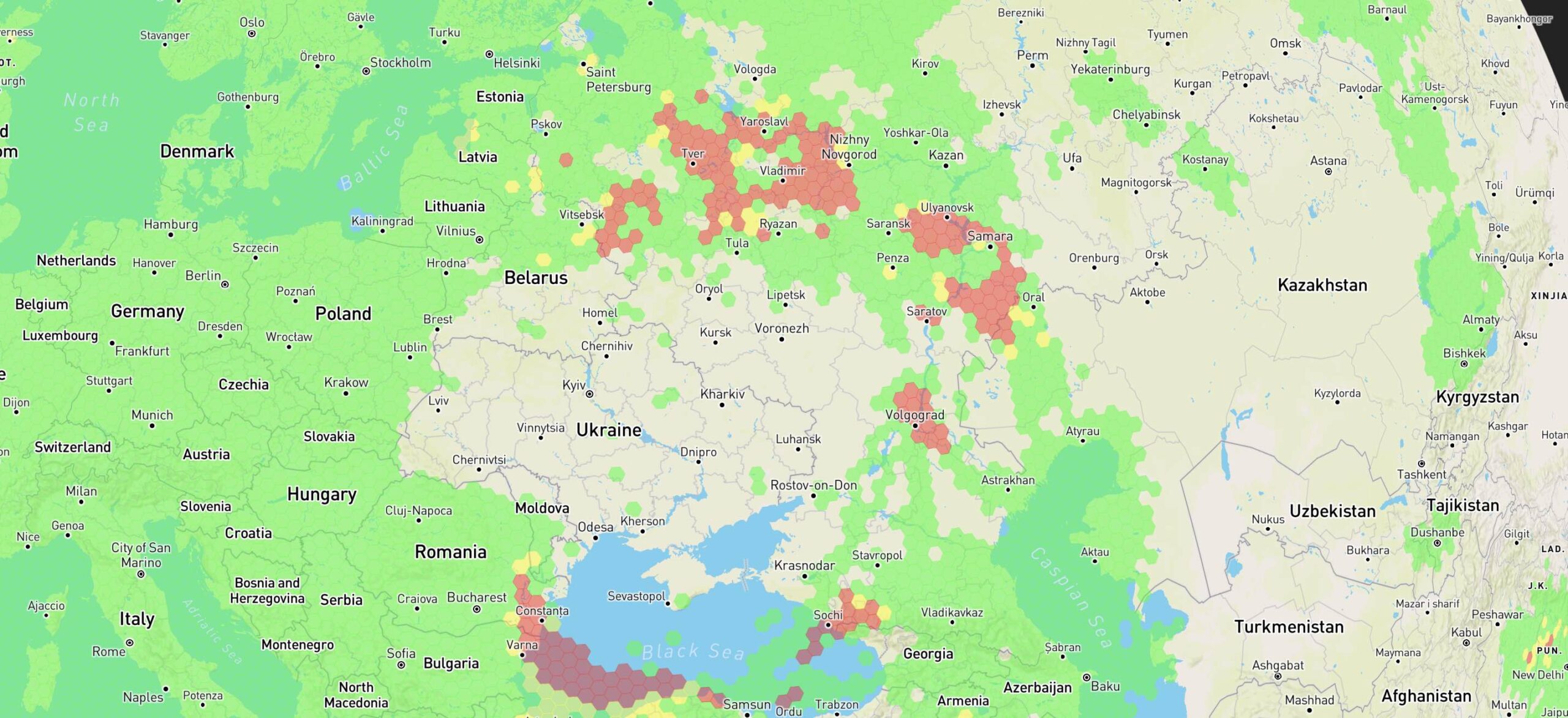
GPS Jamming in Action: An OSINT Perspective
This edition of the Knowmad OSINT blog showcases GPSJam.org, a website that provides information about areas where navigation systems, such as GPS, may experience interference and result in reduced accuracy. These disruptions can often be linked to global hot spots.
Without a doubt, GPSJam.org can be a handy tool for Open Source Intelligence (OSINT) analysts working on armed conflicts and geopolitical flashpoints. GPSJam can also be useful for risk assessments in the air transportation industry and other sectors related to navigation and traffic safety.
What is GPSJam.org?
With its user-friendly interface, GPSJam.org offers a daily map showcasing GPS interference around the world.
Despite its name, the website may also represent other types of global navigation satellite systems (GNSS), such as the inertial navigation system (INS) or the Russian GLONASS.
Reading the Hexagons
The GPSJam map utilizes hexagonal divisions to represent different levels of GPS accuracy reported by aircraft. According to the website’s FAQs, the colored-coded hexagons can be interpreted in the following way:
- Green hexagons indicate areas with more than 98% of aircraft reporting good navigation accuracy.
- Yellow hexagons highlight regions where 2% to 10% of aircraft experienced lower accuracy.
- Red hexagons represent areas with over 10% reporting low accuracy.
The map provides an overview of regions where a significant number of aircraft reported lower navigation accuracy. However, GPSJam does not specify the cause of interference.
Data Sources
The information displayed on GPSJam.org originates from the ADS-B Exchange, which gathers flight tracking signals transmitted by numerous aircraft. The API provided by ADS-B Exchange enables the collection and processing of this data to create informative maps. Where ADS-B lacks data, such as Ukraine where the airspace is closed to international traffic, the hexagons are left blank.
Causes of GPS Interference
Several factors can contribute to GPS interference.
Military exercises frequently involve deliberate jamming of GPS signals to simulate electronic warfare (EW) scenarios.
Similarly, law enforcement agencies may employ GPS jamming to hinder criminal activities or protect sensitive areas. GPS denial areas may pop up around government buildings and critical infrastructure.
Intentional jamming by criminals or individuals seeking to disrupt GPS usage can impact navigation accuracy.
Nevertheless, large-scale GPS interference are often times related to armed conflicts and military operations. Electronic attacks that cover large areas with high intensity can only be launched by military-grade EW systems.

Example of an EW system: the Russian Krashuka-4 (source: Russian Defense Ministry)
It comes as no surprise that areas around Ukraine, including Russia, and parts of the Black Sea region are regularly painted yellow or red. For example, Russia has been jamming navigation systems in its main cities for months to degrade the accuracy of possible drone attacks. Although this measure didn’t stop two drones from hitting the Kremlin.
Following the drone strike on the Kremlin, Russia expanded GPS jamming to 15 regions.

Effects of GPS jamming in Moscow (source: Moscow telegram channel)
In Ukraine, Russian electronic attacks aim to degrade the accuracy of GPS-guided munitions. However, this often results in “fratricidal” effects, meaning the Russians are also jamming themselves in the process, according to a RUSI report.
The same goes for the Eastern Mediterranean, where there is a multilateral maritime and energy dispute. GPS interference extending into the Levant is likely due to Israeli military activity and/or the Syrian Civil War.
Interpreting Data
Interpreting the map and the jamming activity falls on the analyst’s shoulder- as do most aspects of intelligence analysis.
So like with most online tools with OSINT potential: try it out but don’t forget it’s your job to interpret and analyze the findings.
by Vlad Sutea


